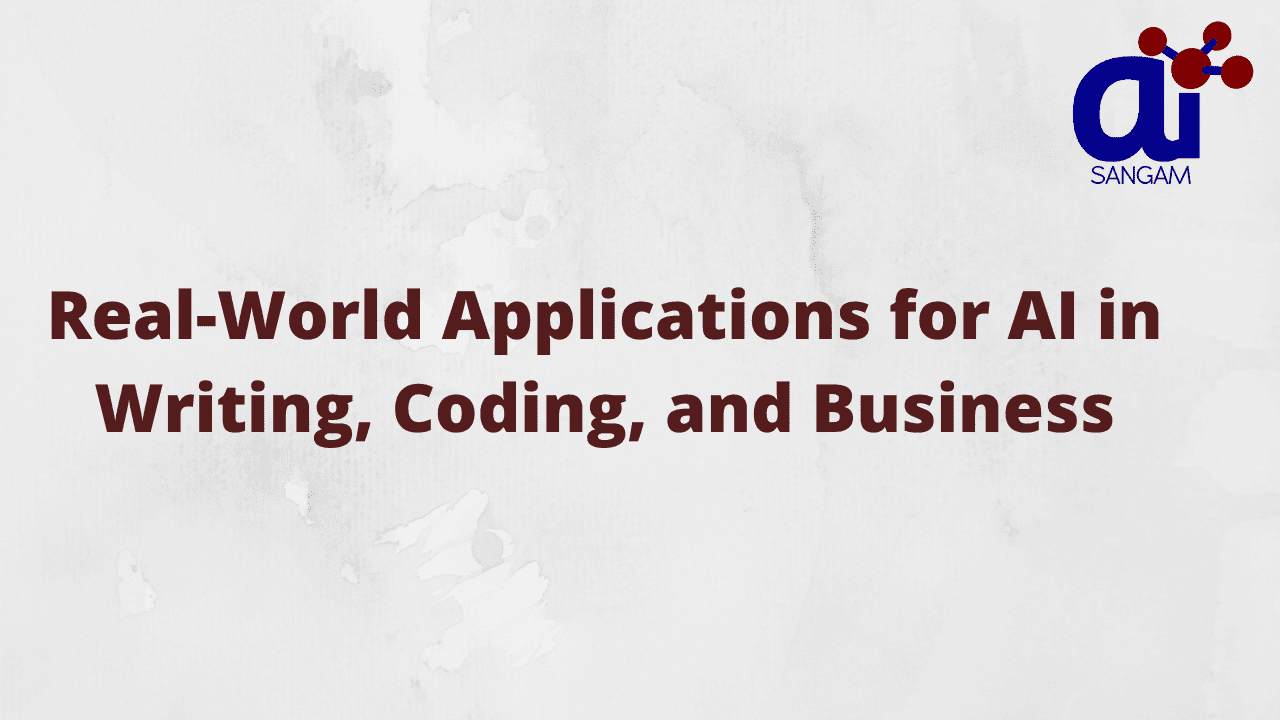Artificial Intelligence (AI) has swiftly progressed from an academic principle to a transformative pressure, influencing almost every market. As companies and individuals alike seek to take advantage of its capacities, AI has shown to be a game-changer in industries like writing, coding, and service management. This write-up explores the real-world applications of AI across these domains, highlighting how it’s reshaping the way we function, develop, and operate.
AI in Writing: Revolutionizing Content Creation
The world of web content production has experienced significant change because of AI developments. From blog writers to reporters, AI tools are allowing writers to streamline their procedures and improve their imagination. AI-based platforms such as GPT (Generative Pre-trained Transformer), which powers ChatGPT, have redefined what is possible in material writing.
1. Content Generation and Ideation
Among one of the most considerable uses of AI in writing is content generation. Writers can now utilize AI-powered tools to produce write-ups, post, and social networks material in a portion of the moment it would take manually. These tools use natural language processing (NLP) formulas to comprehend and duplicate human composing styles, making them valuable for producing engaging and high-quality material.
As an example, AI devices like Jasper and Copy.ai enable material developers to input a couple of key points or keywords and obtain a write-up draft within minutes. The AI can also recommend appropriate subheadings, search phrases for SEO, and tailor content to a certain target market.
2. Editing and Proofreading
AI is likewise simplifying the editing and enhancing and proofreading process. Devices like Grammarly and Hemingway Editor help writers fine-tune their job by finding grammatic mistakes, awkward wording, and readability problems. These AI-driven tools supply real-time tips, making the editing and enhancing process faster and extra efficient, particularly for businesses that call for bulk web content development.
Furthermore, AI can assist preserve consistency throughout web content, which is critical for brands that handle several writers. By feeding the AI system with brand-specific standards, it can make sure that every piece of web content aligns with the tone and design of business.
AI in Coding: Automating Development and Debugging
AI has brought a degree of performance and automation to software application advancement that was when inconceivable. Today, AI is essential to several phases of coding, from writing code to debugging and maximizing it.
1. Code Generation and Suggestions
AI can aid designers by automating code writing. Tools like GitHub Copilot, powered by OpenAI, are currently extensively utilized by designers to produce code snippets and functions based upon basic summaries or existing code. This gets rid of the demand to write repeated code by hand, conserving designers’ time and allowing them to focus on even more complex analytic tasks.
Additionally, AI-powered systems can recommend code conclusions, decrease the probability of mistakes and enhance overall coding speed. This is especially useful for novices, who can rely upon AI to direct them through unknown coding languages and collections.
2. Bug Detection and Debugging
One of the lengthiest jobs in software application advancement is debugging. AI systems like DeepCode and Snyk were created to automate this process. These tools check code for possible insects and vulnerabilities, using options to repair them. By using artificial intelligence formulas, these AI devices can identify patterns in code that typically cause mistakes, decreasing the time spent manually fixing concerns.
Additionally, AI can forecast exactly how code will act in various atmospheres and alert developers regarding feasible insects before they also take place. This predictive ability enhances the overall dependability of software, particularly in massive applications.
3. AI-Driven Testing
Testing is an important part of the development cycle, yet it can be tiresome and taxing. AI can accelerate this process by automating test case generation, implementation, and analysis. For example, AI devices can simulate user interactions, test various code courses, and identify areas of the software application that require additional optimization.
This sort of AI-driven screening not just quickens the release cycle yet likewise improves the precision and efficiency of the examinations, causing fewer insects and a better customer experience.
AI in Business: Enhancing Efficiency and Innovation
Past writing and coding, AI has found profound applications in business operations, boosting everything from customer care to information evaluation.
1. Customer Service Automation
Among the most noticeable applications of AI in the company is in customer care. AI-powered chatbots and virtual assistants, such as those made use of by firms like Zappos and Starbucks, can take care of a large range of customer inquiries without human treatment. These AI systems can comprehend natural language, supply instantaneous feedback, and repair typical problems, causing faster resolution times and enhanced customer fulfillment.
As AI tools become more sophisticated, they can additionally pick up from previous communications and continually enhance their actions. This capacity ensures that services can provide personalized, contextually appropriate assistance to their clients around the clock.
2. Predictive Analytics and Decision Making
AI-powered analytics tools are changing the method businesses make decisions. By analyzing huge quantities of data, AI can recognize patterns and patterns that humans might miss. As an example, businesses like Amazon utilize AI to anticipate client actions, maximize inventory, and suggest products based on previous purchases.
AI is likewise utilized to anticipate sales, monitor market problems, and assess rival methods. This helps services make data-driven choices that cause greater success and far better tactical planning.
3. Marketing and Personalization
AI is significantly being made use of in electronic marketing to individualize consumer experiences. By analyzing customer habits, AI can tailor marketing projects to private choices, boosting interaction and conversion prices. As an example, Netflix makes use of AI to advise flicks and TV programs based upon a customer’s seeing background, while Spotify creates tailored playlists based upon listening habits.
In the advertising space, AI systems can maximize ad targeting by identifying the most effective times and platforms to get to target markets. This results in extra reliable advertising costs and higher rois.
The Future of AI: Exponential Growth Ahead
As AI continues to advance, its applications will certainly become a lot more widespread and innovative. From reinventing material development to transforming business operations, AI is ready to redefine industries across the globe. According to a record by Roots Analysis, the international AI agents market is anticipated to increase from USD 9.8 billion in 2025 to USD 220.9 billion by 2035, representing a greater CAGR of 36.55% during the projection duration. This development highlights the enormous possibility of AI affecting not simply private industries but the international economy.
Conclusion: Embracing AI for the Future
In conclusion, AI is no longer a futuristic modern technology but a crucial tool that is actively reshaping exactly how we compose, code, and operate. From automating content creation to enhancing software application development and enhancing business decision-making, the real-world applications of AI are huge and far-ranging. As technology continues to progress, companies and people that accept AI will certainly go to the center of innovation, placing themselves for success in the swiftly altering digital landscape.



